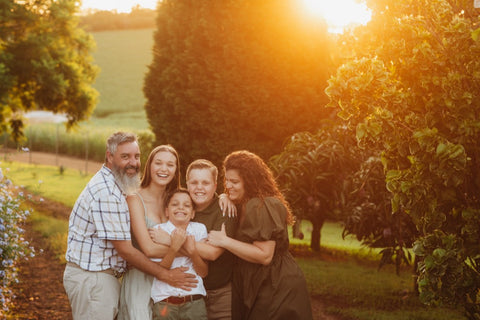- Lightroom Presets
- Mobile Presets
-
Photoshop
-
Learn
-
Support
-
Install
- Best Sellers
- Blog
By Gayle Vehar on | No Comments

Photographing the night sky is one of the most rewarding and challenging aspects of photography. The excitement of seeking out dark skies and breathtaking landscapes to capture the stunning Milky Way on a clear, moonless night attracts both amateur and professional photographers from around the globe.
For us amateurs, however, without high-end star-tracking camera software and astrophotography filters, editing plays a crucial role in revealing the beauty of the night sky. Even professional photographers often enhance their images to achieve the iconic bright, color-filled look we admire on Instagram and across the internet.
This tutorial will guide you through the process of editing your night sky photos using Lightroom’s powerful tools, a part of my editing journey that I have particularly enjoyed and am excited to share with you!
Let's start with a very underexposed photo of the Milky Way I captured during a backpacking trip in the Sierra Nevadas. I know it doesn't look like much right now, but wait until you see Lightroom transform this nearly black night sky image into something magical.

When capturing the Milky Way or any sharp and clear shot of the stars, your exposure time is limited to a maximum of around 20 seconds before the stars start to blur. A shorter exposure time, combined with a relatively low ISO to prevent noise on amateur cameras, often results in an underexposed photo. But don't worry—all those lovely hidden color values are just waiting to be brought out!
In my example image, which was extremely underexposed, I started by boosting the exposure up to +3.50. The rest of these edits, however, can be applied to any night sky photo.

One of my favorite aspects of editing astrophotography is working with contrast—dark silhouetted landscapes and bright stars set against a colorfully dark sky. You can achieve stunning results just by making some adjustments to your basic sliders.
Highlights and Whites Adjustment:
Shadows and Blacks Adjustment:

Dehaze and Clarity Adjustment:
In this photo, I want to isolate the Milky Way core so I can apply additional edits to enhance clarity.
To do that, open the masking panel and select the brush tool. Use the slider panel that opens and set the sliders using the numbers highlighted below or something that works for your image. Then brush over the Milky Way core in your image.
For this image, I increased my contrast around the core by +17, highlights by +50, whites by +26, clarity by +42, dehaze by +13, and decreased my blacks by -4.

Here's where the editing process gets really exciting! At this stage of your editing, you have the artistic freedom to decide the color direction of your image. Some prefer the pink and red tones in the Milky Way, while others gravitate towards purples and blues. Your choice depends on the emotional message you want to convey and the visuals you wish to share with your viewers.
In my basic edits panel, I slightly lowered the overall saturation to allow for finer, more selective color adjustments. Personally, I love the indigo and purple shades of the Milky Way and want to eliminate as many of the yellow and green hues in my photo as possible. By adjusting the color sliders as shown below, I was able to bring out the deep, beautiful color of the core.

Next, I'll color grade the photo to refine the final color scheme. I usually prefer using a tetradic color scheme to maintain a harmonious balance across my photos.

Denoise is one of Lightroom's newer AI tools, and I quickly fell in love with this incredible feature. It does such an impressive job of removing noise from any photo that I almost feel like I'm cheating when I use it. This tool will significantly enhance your ability to produce stunning astrophotography images, especially when using a more amateur setup.

After applying Denoise, your photo may appear slightly different and lose some contrast. To address this, return to the tone and color panels to make any final needed adjustments.
Here is the final edited night sky image:

One of the most important lessons for photographers is that camera equipment isn't everything, and its high price tag doesn't guarantee quality images. However, with a good eye for capturing shots and thoughtful, artistic editing in Lightroom, anyone can create professional-looking, beautiful images.
I hope this tutorial has encouraged you to shoot for the stars! Happy editing!
Do you have any questions or comments about How to Edit Night Sky Photos in Lightroom? Leave us a comment below - we would love to hear from you! And PLEASE SHARE this post using the social sharing buttons (we really appreciate it)!


Comments